Factors Affecting Dog Training
What are the Factors Affecting Dog Training
When a dog owner exercises a dog outside, controls it in walking and
in daily situations, he admits that obedience of the same dog may be
different. What are factors that affect dog obedience? Are we able
to predict how good a dog will obey demands of a trainer?
We will leave training itself behind for now. It's obvious that dog
obedience depends strictly on the range of dog training stage, work
and patience that is spent by dog's owner. But why the same dog
obeys the same commands in a different way on various conditions?
Let's review the factors that affect dog obedience.
Inner Dog Irritants
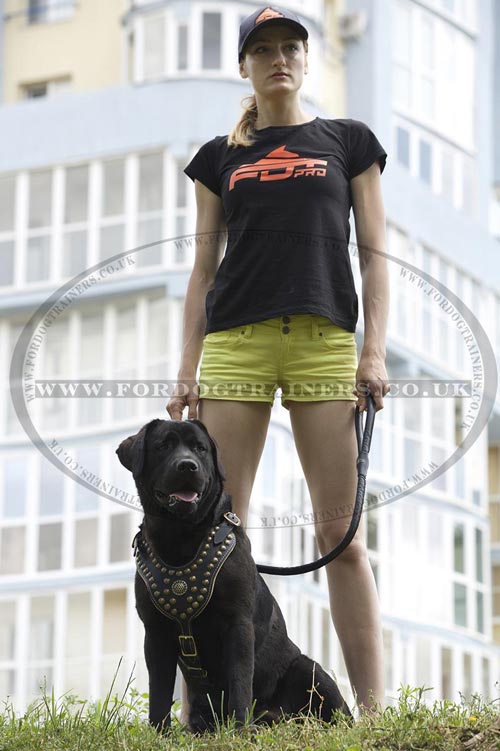 If a dog is ill, injured or have had not enough walking than it goes
without saying that it will not be controlled. Though, dog health is
a separate issue. Daily preventive examination of dog health state
is to be the rule for any dog owner.
If a dog is ill, injured or have had not enough walking than it goes
without saying that it will not be controlled. Though, dog health is
a separate issue. Daily preventive examination of dog health state
is to be the rule for any dog owner.
If there are no health issues the first you should do after going
out with your pet is to walk the dog. Only after this you may count
on dog reaction to your commands.
One more irritant is dog hunger. A dog in a half-hungry and hungry
state works better that a full one. That's why it is recommended to
feed a dog after training.
Circumstantial Irritants
When a dog appears in unknown circumstances it should examine it. An
animal is to smell and view everything around, mark the territory.
This is an instinctive dog behavior that is established in its
nature, and there is no way to argue about it. If you will make a
dog work at once in new surrounding, the animal will look for any
possibility to examine the unknown place. Of course, it will not add
obedience to your dog. If you wish your dog to be alert to your
commands and not be distracted to the new place, let it examine the
territory first.
There are situations in daily life when you have no time to make a
dog familiar with a new place. For example, a guard dog should be
always alert on any conditions. That's why there is a need to show
the main routs to your dog, the ways you use for walking, visiting
friends etc. There should be no surprises for a dog on the route,
such as turns, dark passage arches etc. Make all common routs
familiar to your guard dog and spend enough time for walking. And a
couple of protection training in such places will add assurance to
you and your dog.
Strong Distracting Factors
If you see that in a couple of meters from you there are dogs you
should take your dog on a leash. It would be better to admit this
irritant before your dog.
If you are walking along a dark park and there is a stranger walking
towards you, it is better to call a dog in advance and get it on a
leash in a "heel" position. Your dog could not react to a stranger
in a light daytime, but in the evening it will have a higher level
of alertness and even barking on a stranger may cause you a lot of
problems.
Try to evaluate surrounding circumstances earlier than your dog
admits them, predict dog reaction, for example, to a peacefully
sitting cat under a tree.
The State of Dog Nervous System
 Keep an active, lively dog home just one day and then let it play
for 5 minutes out, then try to work over dog obedience. Of course,
in this case your dog will be out of control. But if there is 30 min
after 10 km jogging with your dog than 5 min walking is more than
enough to start training. The difference is explained by the nervous
state of your dog.
Keep an active, lively dog home just one day and then let it play
for 5 minutes out, then try to work over dog obedience. Of course,
in this case your dog will be out of control. But if there is 30 min
after 10 km jogging with your dog than 5 min walking is more than
enough to start training. The difference is explained by the nervous
state of your dog.
Physical training and regular exercises make a dog more stable. Even
very active and unstable dogs for such routine - physical training,
then obedience and protection exercises - will be quite well
controlled.
So, here is the conclusion. Positive action to dog obedience
includes:
- physical health and absence of inner distracting irritants;
- familiar surrounding and circumstances for a dog;
- minimizing of strong distracting factors around;
- knowledge of dog nervous system state in a definite moment of
time.
You may like these dog accessories that will make your dog walking and training more comfortable:
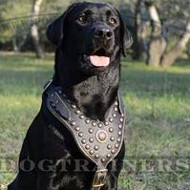
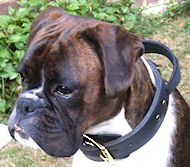
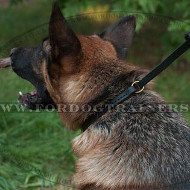
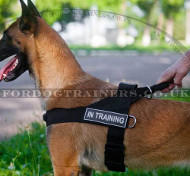
 If a dog is ill, injured or have had not enough walking than it goes
without saying that it will not be controlled. Though, dog health is
a separate issue. Daily preventive examination of dog health state
is to be the rule for any dog owner.
If a dog is ill, injured or have had not enough walking than it goes
without saying that it will not be controlled. Though, dog health is
a separate issue. Daily preventive examination of dog health state
is to be the rule for any dog owner.  Keep an active, lively dog home just one day and then let it play
for 5 minutes out, then try to work over dog obedience. Of course,
in this case your dog will be out of control. But if there is 30 min
after 10 km jogging with your dog than 5 min walking is more than
enough to start training. The difference is explained by the nervous
state of your dog.
Keep an active, lively dog home just one day and then let it play
for 5 minutes out, then try to work over dog obedience. Of course,
in this case your dog will be out of control. But if there is 30 min
after 10 km jogging with your dog than 5 min walking is more than
enough to start training. The difference is explained by the nervous
state of your dog. 


